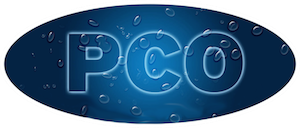Selection of the right coating material for a product can be a rather complex problem and requires an intimate knowledge of the properties of the coating materials available. There is more involved than simply selecting a color. It is the entire coating system that counts, including the surface preparation, method of application and method of curing.
In selecting a coating the final decision generally involves a compromise between conflicting properties of the coating, cost, and application techniques. It is generally required that some compromise be accepted in properties of the coating to gain some of other necessary characteristics, i.e., less flexibility to obtain hardness or wear resistance. Perhaps the first and most important question that one might ask is “what is adequate at the lowest cost.” If the finishing engineer has a choice of several different materials that may be acceptable, the problem, then, is to select the one that gives the best value.
Value can only be determined in evaluating the total cost of the final finish. So often the powder material value is determined by cost per pound, when in fact the real value comes from determining the cost per square foot covered. Evaluating the value of one powder in comparison to another is a rather simple task. Factors such as the powders ability to transfer will have an immediate effect on the production line speed and process time. The ability of the powder to be collected for reuse in a given recovery system is a very important consideration that is often overlooked. The hiding power of the material has a great deal to do with the cost per square foot as well as the speed in which the products can be processed. Factors such as these must be considered when evaluating the powder coating material. Sure the cost per pound must be factored into the equation, but it is only one factor. Coating materials cannot be valued by price per pound alone.
Resins, fillers, pigments, and other ingredients, all have a roll in the cost to manufacture a material, and they all have an effect on the value as well. For a powder manufacturer to lower the price per pound they need to simply increase the amount of filler, or the weight of any lower cost component that makes up the total finishing system. This can and will have an effect on the ability of the powder to perform, thus having an effect on the total value of the coating material. Generally, only negative results come from lowering the per pound cost of the material by means of loading it with cheaper ingredients. Negatives such as, lower system line speeds, and increased reject rates due to inadequate coverage or inability to reclaim usable materials will greatly effect the profits of any finishing system.
Related Resources
- Building Environment Enclosures
- Engineered Buildings
- Powder Coaters Corner
- Powder Coating Industry Research
- Contact
Powder Coating Value







